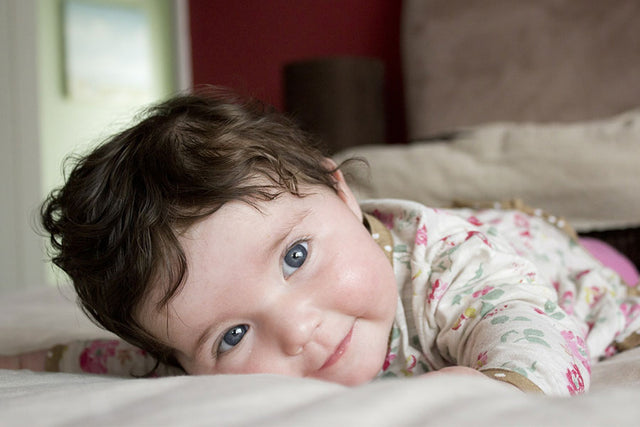‘Magic Breathing’ Helps Even the Wildest Kids Calm Down

About Deep Breathing Exercises for Kids
Have you ever been so upset that someone told you to “take a deep breath”? When we are stressed, frightened or in pain, we automatically tighten up and hold our breath. Over time, that can lead to headaches, anxiety and even high blood pressure.
Learning how to stay calm is a very important life skill. Unfortunately, many people in our culture never learn it (or can only calm by eating, sleeping, watching TV or using drugs and alcohol). Yet all adults—and children—have a powerful natural stress-reducer: simple breathing!
Just a few sloooow deep breaths (magic breathing) can quickly bring a sense of peace. Deep breathing exercises help impulsive toddlers learn to turn their motor off. With a little practice, your little friend can learn how to use this superb self-soothing skill anytime he’s frustrated, scared, hurt or mad. It is a self-control tool your child can use forever.
Benefits of Deep Breathing Exercises
Deep breathing exercises have a number of benefits. Deep breathing...
- Decreases stress and anxiety
- Calms you down
- Boosts immune function
- Increases energy
- Helps you think clearly
When is your child ready for deep breathing exercises?
It’s best used for toddlers over 2 years of age (who can already wait patiently for a minute).
Deep Breathing Exercises for Kids
Magic breathing—or deep breathing—is as simple as breathing, but before you teach your bouncy little tyke, it’s important for you to learn it.
First, you practice deep breathing exercises:
- Relax your face. When the house is quiet, turn off the phone and take 2-3 minutes for yourself. Sit in a comfy chair, uncross your legs, put your hands in your lap, drop your shoulders, and––most important––let the tiny muscles around your mouth and eyes get very soft and relaxed.
- Take a few slow breaths. Slowly inhale through your nose (as you silently count to 5) then slowly exhale through your nose (for another silent 5 counts). Make a little whooshy sound as the air flows in and out, and never hold your breath.
- As you breathe in, let one hand slowly rise and as you breathe out, let it slowly drop.
Practice where your child can watch. He may get curious and want to imitate you.
Now, you’re ready to teach your little one!
How to Teach Your Child Deep Breathing Exercises
- Say, “Breathe with Mommy.” Start by leading him through a couple of fast breaths (2 counts in, 2 counts out), using your whooshy sound and hand motion to guide him. Don’t get frustrated if he can’t do it right away. It may take a dozen tries for him to get the hang of it.
- Reward any breathing with encouragement: “Good breathing!” “Good following my hand.” Give a hand check and immediately follow it up with a little play. (Later in the day, gossip about his good breathing to your spouse, his teddy bear or a birdie outside.)
- Gradually, lead your child through more and slower breaths (aim for at least 5 breaths at a sitting). Once he gets good at magic breathing, practice it in different places and at different times of the day.
For help teaching Magic Breathing, check out SNOObie! Our all-in-one white noise machine + nightlight features two Magic Breathing tracks that use synchronized light and sound to show families how to use this calm-down technique.
Deep Breathing Exercise Tips
- Be a role model. Your child will learn magic breathing faster when he sees you doing it every day.
- Time it right. Do it before a nap or after eating, when your tot’s already a bit relaxed.
- Pick a “magic” place. Kids love the word “magic”! Pick a “magic” spot to sit and “magic” pillow to sit on. (It will be even more special if you tape pictures of “magic” trees or butterflies on the wall of your “magic” spot.) He’ll instantly relax as soon as he sits and starts to breathe.
- Don’t be pushy. If he resists, offer to do something fun after his magic breathing. If he still refuses, say, “No problem.” Then get busy with something and ignore him for a few minutes. Try offering the breathing again later that day and the next. If your child refuses every time, wait a month or two and try again.
- Practice often. Kids who practice magic breathing every day quickly become little experts at self-calming.
- Combine breathing with play. Even wild kids will take a few breaths when they know they’ll be rewarded for it. So, do a couple of slow breaths, followed by something fun, followed by a final breath or two after the play stops. This is a great way for your uncivilized little friend to learn how to self-soothe even after hectic play.